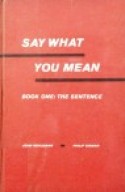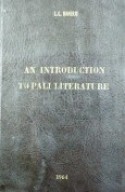CONTENTS
- The Three Main Parts of a Sentence……………… 1
A Sentence Expresses the Three Parts of a Thought, 1 Parts of Speech, 4 Analyzing Sentences, 7
- Contractions…………………………………………… 10
Special Problems in Contractions, 12
- Nouns & Pronouns As Predicate Words……… 17
Different Kinds of Nouns, 21 Plural Forms of Nouns, 22 Seven Troublesome Pronouns, 28
- Variations of the Verb To Show Time & Certainty or Doubt…… 33
- Verbs Which Assert Action………………………. 37
Agreement of Subject and Verb, 45
- Questions, Commands, And Exclamations….. 52
End Punctuation, 54
- Compound Elements & The Coordinate Conjunction…….. 59
Compound Sentences, 69 Writing Balanced Sentences, 72
- Modifiers………………………………………………… 77
Adjectives, 78 Adverbs, 88 Possessive Modifiers, 99 Appositives, 106 Prepositional Phrases, 112
- Three Independent Elements……………………. 123
Interjections, 124 Nominatives of Exclamation, 124 Nominatives of Address, 125
- Two Kinds of Actions: The Object……………………………………………………………. 128
Transitive and Intransitive, 128 “Passive Action,” 140 Six Troublesome Verbs, 144
- Noun Clauses 148
Punctuation of Quotations, 154
- Verbals 162
Gerunds, 164 Infinitive, 166 Participles, 171 Errors in Parallelism in the Use of Verbals, 188
- Subordinate Clauses As Modifiers……………………………………………………………. 193
Adjectival Clauses, 195 Adverbial Clauses, 215
- More Independent Elements 240
Absolute Phrases, 241 Parenthetical Expression, 243
- Six Difficult Constructions 247
Objective Complements, 247 Another Sentence Pattern, 249 Infinitive with
Subject, 250 Retained Object, 251 More About Mood, 252 Verbal Nouns with Adverbial Modifiers, 253
- Parts Of Speech: A Review 255
Parts of Speech in the Dictionary, 258 Groups of Words Used as Parts of Speech, 262
- Defining Terms 266
Index……………………………………………….269
TO THE TEACHERS WHO WILL USE THIS BOOK
The authors of Say What You Mean believe that an understanding of the English sentence is a fundamental requirement for effective communication of thought. The plan of the book is a step-by-step presentation of those sentence patterns which a person must master to express his thoughts accurately and effectively. The study of each sentence pattern is followed immediately by exercises putting it to use in the improvement of speaking and writing. (The fact that reading and listening also can be measurably improved by mastery of the patterns of sentence structure has not been overlooked.)
The materials presented in this book have been used in high school classes for many years, and the results of this use have strengthened the authors’ confidence in their effectiveness.
The results obtained from the use of this book by any teacher in any class of course depends upon this particular teacher’s understanding of, and belief in, the principles upon which the book is organized and upon his skill in using the materials to achieve his objectives. A skillful teacher can make the study of the sentence and the training in effective communication gained thereby a valuable experience.
Moreover, a skillful teacher can stimulate interest and provide excitement during the English period by making use of the many carefully constructed opportunities offered for fringe benefits: derivation, meaning, spelling, and pronunciation of words; source (title and author) and meaning of sentences; opinions concerning the truth expressed in the sentences, etc. There is scarcely a sentence which does not offer the alert teacher opportunity to provide the students with some interesting form of language growth.
One opportunity which should not be overlooked is that of teaching elementary logic. No subject is superior to grammar in developing the ability to think clearly. Meaningful and accurate definitions applied relentlessly to specific cases are excellent for this purpose.
For instance:
Major premise: A common noun is a name applied to each individual in a class.
Minor premise: In the sentence He is an American, American is a name applied to each individual in a class.
Conclusion: In this sentence American is a common noun.
Although knowing that American is a common noun may be of no practical value, the experience in logical thinking which establishes this truth can be very valuable and exciting.
Nomenclature and definitions in this text conform to standard terminology except for a few variations made in the pursuit of accuracy and clarity. Of these exceptions the treatment of the verb is the prime example. Since the concept of the verb as an asserting word (not an action word) is basic to the understanding of all sentence patterns, it is as an asserting word that the verb is defined and taught. (Incidentally, this particular item has caused many students to exclaim gratefully, “For the first time in my life, grammar makes sense.”)
And now a word about “correct” English. The authors of this book believe that such a thing as “correctness” exists. They believe it is established by the usage of educated persons. They believe students in our secondary schools should be made aware of the fact that our ablest speakers and writers conform to certain usages which they and many other persons consider “correct.” Even if the young person in his teens does not immediately put these principles of “correctness” to use in his writing and his speaking, he should learn what they are. Later, when some social or vocational pressure makes him need to write or speak “correctly,” he will have the knowledge which he then needs and values.
In the matter of “correctness” this book is conservative in that it approves as “correct” such usage as is wide-spread among present-day educated (repeat: educated) persons. The authors do not believe that effective communication is to be obtained by adjusting to the standards of wide-spread mediocrity.
However, rather than upon “correctness,” the emphasis in this text is upon accurate and effective communication of thought.
John Gehlmann – Philip Eisman
TO THE STUDENTS WHO WILL USE THIS BOOK
Say What You Mean is a book prepared by two English teachers to help you acquire the skill to do just what the title says: say what you mean. From experience we know that saying what one means is a skill sometimes difficult to acquire but of inestimable value when it is • finally mastered.
The lesson materials in this book have been used for years in various classrooms, and numerous students have expressed their appreciation of the help obtained from them. We have confidence that any student who wishes to improve his ability to communicate thought will be greatly aided by giving these materials serious attention.
Most of this book is devoted to helping you communicate thought more accurately and effectively than you have been doing. But in many lessons you will be taught that certain ways of speaking are “correct” and others are “incorrect.” By “correct” we mean “approved by wide-spread, present-day usage among educated persons.” By “incorrect” we mean “considered not standard English by many educated writers and speakers.” We believe that it is to your interest to give consideration to “correctness” in your speaking and writing. “Ị seen it” may say exactly what you mean, but, in our opinion, “I saw it” is a better way to communicate this thought—because it is “correct.”
“Shamed by your English?” asks a recent advertisement.
“Even with intelligence, ability, and ambition, none of US will ever go any further in business or social life than our ability to speak and write will let us go,” the ad continues. “You need a command of good English to speak without fear of embarrassing mistakes….”
We agree with these statements. If you also agree that it will be to your advantage, both socially and financially, to polish up your English, you can make your study of this book one of the most valuable experiences of your school career.
And the experience need not be dull. To suggest to you that grammar can be fun, we start off with a little bit of verse, which calls to your attention some of the “embarrassing mistakes” you should learn to avoid.
 Facebook
Facebook
 Google
Google
 Google+
Google+


















